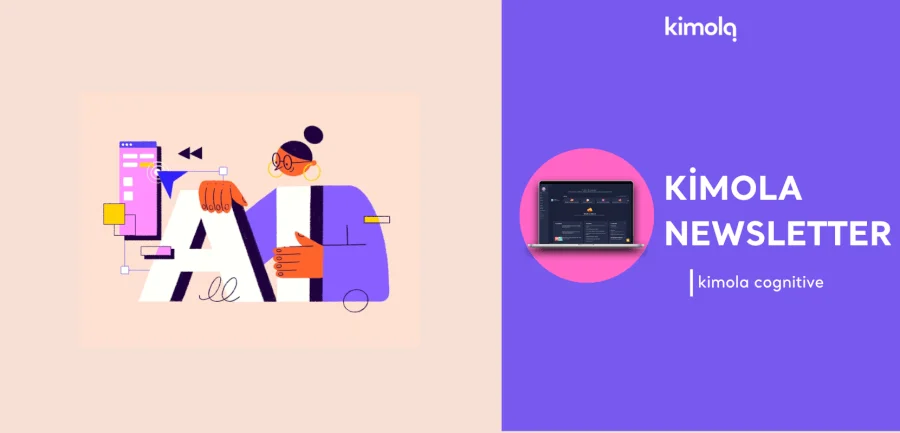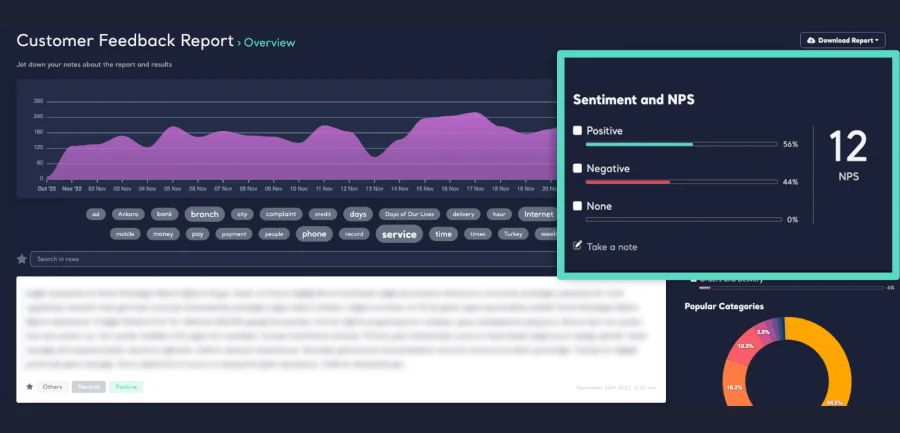Kimola Newsletter | Cognitive 8#: MomGPT, yey or nay?🤖

We are gathering news on artificial intelligence, machine learning and Kimola Cognitive's product updates on this newsletter.
Let us know what you think about our newsletter on anything by mentioning us on Twitter @kimolacognitive
Kimola Cognitive and NPS

What do customers really think of your brand or products? Are they loyal? Do they like you enough to recommend you to their friends? These are important questions a brand needs to answer.
So how do you measure the likelihood that a customer will recommend a product or service to others? Of course, there are many methods and metrics to measure customer satisfaction. One of these metrics, NPS (Net Promoter Score), is considered one of the ten most effective metrics in Customer Relationship Management (CRM). The NPS system not only measures customer satisfaction but also whether your customers like your company enough to recommend it to their friends.
Of course, while it is easy to prepare an NPS survey and calculate an NPS value, in some cases surveys may not be an option. Especially when it is impossible to ask survey questions to customers. In this case, it requires social data and sentiment analysis that uses deep NLP (Natural Language Processing) techniques to calculate NPS without asking consumers questions.
We at Kimola collect conversations about a product, service or brand on e-commerce sites, social networks, forums, blogs and news sites with our social listening tool, Kimola Analytics. With our machine learning platform Kimola Cognitive, these consumer conversations are classified as positive, negative and neutral content. Here, negative content represents Detractors, neutral content represents Passives, and positive content represents Promoters. So calculating the percentage of Supporters, Passives and Detractors allows us to apply the traditional NPS formula.
🌮 You can become a free member of Kimola Cognitive from this link, and you can find out your NPS score immediately. For more info...
Why is ChatGPT Everywhere
The recently introduced artificial intelligence bot ChatGPT is available. ChatGPT, a chatbot based on the language model GPT-3.5 that uses deep learning to generate human-like text, is the latest member of the text-generating artificial intelligence family. Developed by OpenAI, the developer company of Dall-E, which transforms textual expressions into visuals, artificial intelligence can naturally answer many questions asked of it, thanks to its large database. Most users who have tried ChatGPT say that they feel as if they are talking to a human.
Digital Portraits on Social Media
In recent days, you may have come across portraits created by artificial intelligence in your Instagram stream and wondered how they were made. If you haven't satisfied your curiosity, let us give you the answer: Lensa AI. Lensa AI transforms the photos you upload to the application into avatars thanks to artificial intelligence technology. Developed by Prisma Labs, the app has actually been active since 2018. However, the app topped the list of most downloaded apps last month. The reason for this is the "magic avatars" feature that came in late November. As of the moment, this feature was made available, the application, which was downloaded 2 million times in the USA during November, reached 4 million downloads in the first 5 days of December.
AI Diagnoses Pneumonia
Scientists have developed an artificial intelligence model that recognizes pneumonia by listening to cough sounds. Researcher Jin Yong Jeon of Hanyang University in South Korea and his team used the voices of people diagnosed with pneumonia to train artificial intelligence. In the experiment, attention was paid to the fact that each room and recording device were different. Thus, artificial intelligence would not be affected by technical changes in the acoustics of the rooms and recording devices. When the information obtained from here was combined with cough sounds, it was seen that artificial intelligence could recognize pneumonia in any environment.
Biotech Labs Use AI for New Drugs
Text-to-image AI models like the DALL-E 2 are trained to create images of almost anything you want. The technology behind these programs is also used in biotechnology laboratories to create designs for new protein types never seen in nature. Recently, the two laboratories announced programs that use diffusion models to create designs for new proteins. Generate Biomedicines, a Boston-based startup, has unveiled a program called Chroma, which the company describes as "biology's DALL-E 2". At the same time, a team at the University of Washington led by biologist David Baker created a similar program called RoseTTAFold Diffusion.







